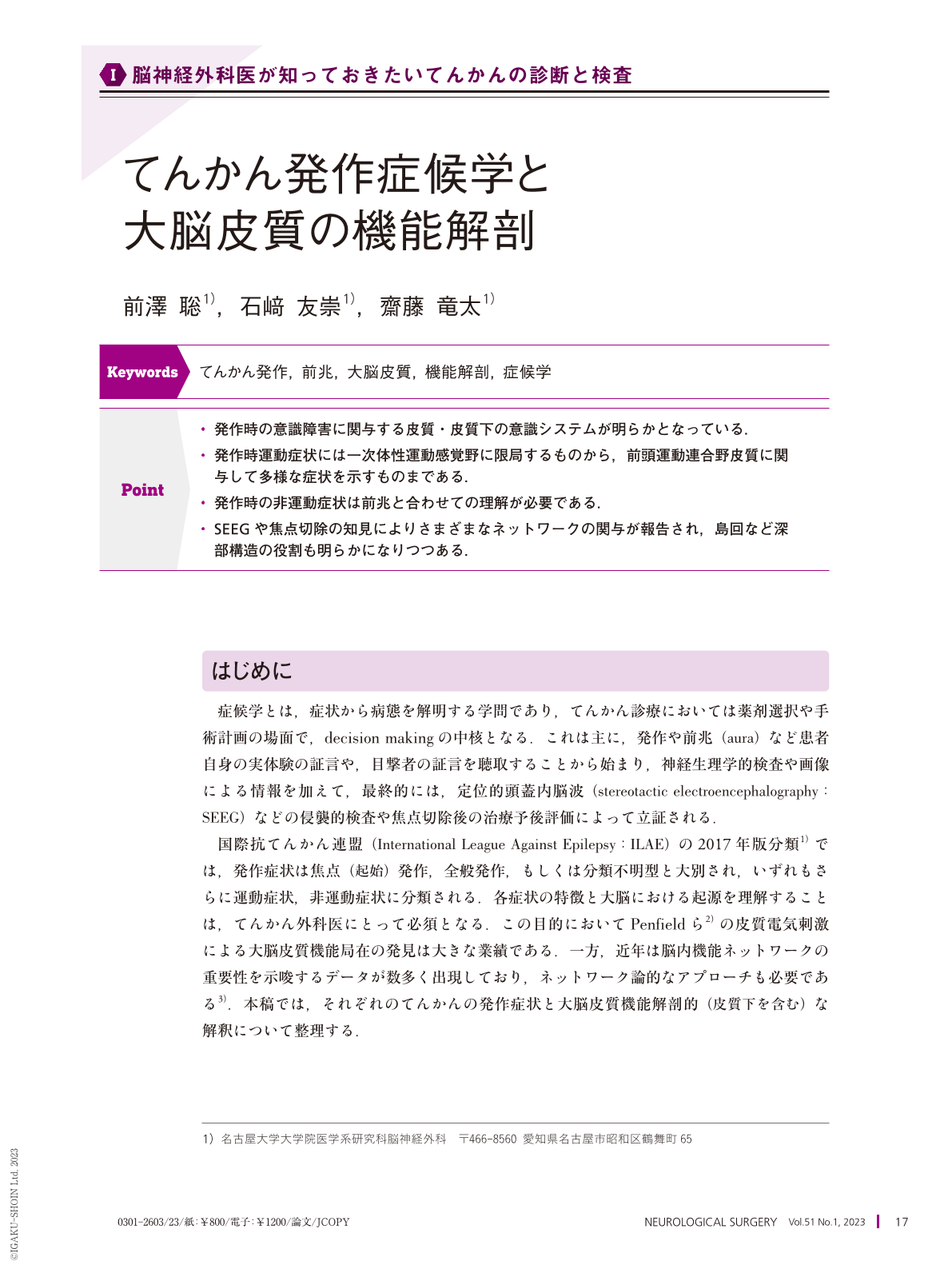Japanese
English
- 有料閲覧
- Abstract 文献概要
- 1ページ目 Look Inside
- 参考文献 Reference
Point
・発作時の意識障害に関与する皮質・皮質下の意識システムが明らかとなっている.
・発作時運動症状には一次体性運動感覚野に限局するものから,前頭運動連合野皮質に関与して多様な症状を示すものまである.
・発作時の非運動症状は前兆と合わせての理解が必要である.
・SEEGや焦点切除の知見によりさまざまなネットワークの関与が報告され,島回など深部構造の役割も明らかになりつつある.
Understanding the semiology and underlying anatomy of each seizure is essential for epilepsy surgeons. According to the International League Against Epilepsy(ILAE)classification in 2017, seizure types are classified as focal, generalized, or unknown onset, all of which are further classified as motor or non-motor onset. Impairment of awareness is involved in consciousness systems(consisting of subcortical structures such as the thalamus and upper brain stem)and cortical structures(including the frontoparietal association cortices). Seizures with motor features are divided into elementary symptoms for which myoclonic, clonic, and tonic expressions reflect the somatotopy of the primary motor cortex; and integrated or gestural motor expression representing activation of the motor association cortex. A rostrocaudal gradient is demonstrated in hyperkinetic movements in frontal lobe epilepsy. Non-motor epileptic features should be understood together with auras, which correspond to focal aware seizures and hold crucial localizing semiologic values. The correlation between functional anatomy and seizure semiology is justified by invasive recordings such as stereotactic electroencephalography and subdural recordings, and also confirmed by seizure outcomes after resection of supposed epileptogenic zones. In addition to the conventional localization theory, it is necessary to consider the neural network theory for further recognition of the functionally anatomical basis in an incomprehensible demonstration of seizures.

Copyright © 2023, Igaku-Shoin Ltd. All rights reserved.


